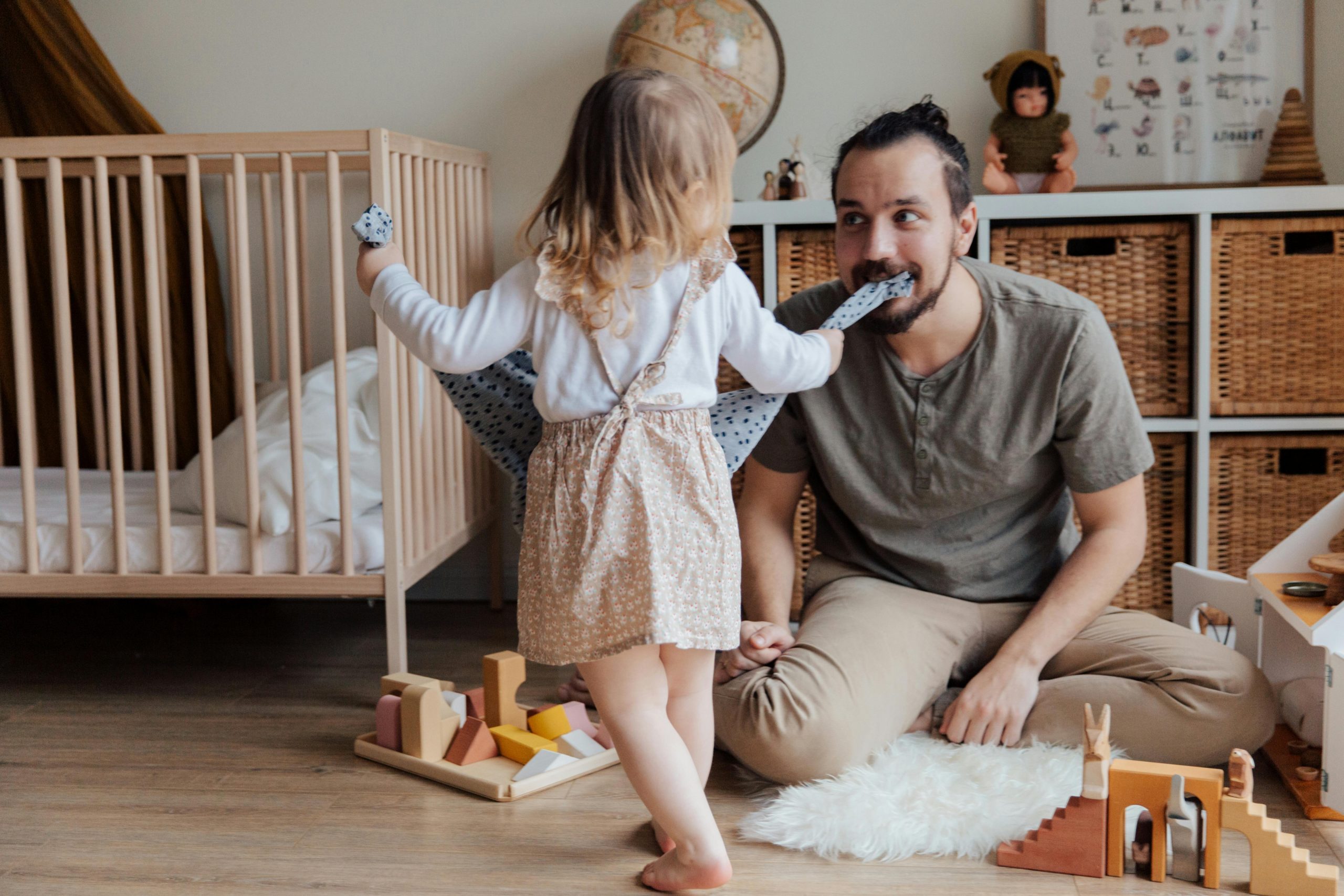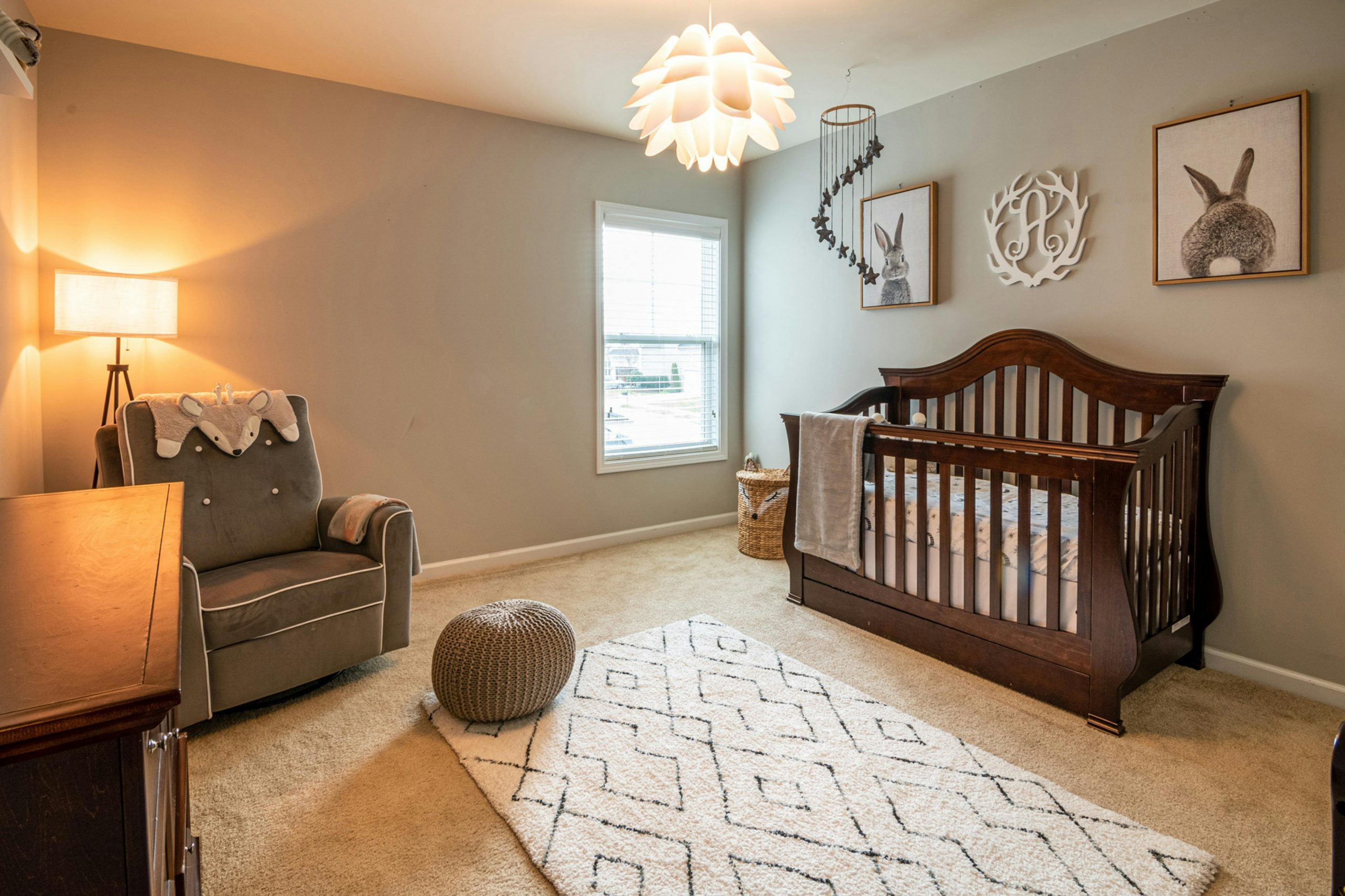When you’re setting up a nursery for your little one, it’s easy to get caught up in the excitement of designing the perfect space. However, in all the anticipation, it’s important to think beyond just the cute decor and get the layout right for your baby’s safety, comfort, and convenience. Avoiding some common nursery layout mistakes can help you create a space that works for both you and your baby in the long run.
1. Is Your Nursery Layout Safe?
The first priority when designing your baby’s nursery should always be safety. It’s easy to get distracted by all the adorable furniture and accessories, but neglecting safety can lead to serious problems.
Key Safety Considerations:
- Furniture Placement: Ensure that the crib is placed away from windows, cords, or other hazards. Keep it away from blinds or drapery cords that could pose a strangulation risk.
- Sharp Edges: Avoid furniture with sharp corners. Opt for furniture with rounded edges or use corner protectors.
- Electrical Outlets: Always cover electrical outlets with safety plugs and keep cords from lamps and electronics out of your baby’s reach.
- Avoid Overcrowding: Cluttered spaces can increase the risk of trips and falls. Aim for a clean, open layout that leaves plenty of room to move around.
Pro Tip:
Consider placing the changing table near the crib but away from any windows or sources of direct light to create an easy flow without putting your baby at risk.
2. Are You Overcrowding the Space?

It’s tempting to buy all the cute furniture, gadgets, and decor pieces you see, but too much stuff can make your nursery feel cramped and overwhelming. Your baby will spend most of their time in the crib or on the changing table, so prioritize those items first.
How to Avoid Overcrowding:
- Focus on Essentials First: Your crib, changing table, and comfortable chair for nursing or feeding should be your top priorities.
- Maximize Vertical Space: Use shelves, wall-mounted organizers, and hooks to free up floor space for more important items.
- Storage: Choose multi-functional furniture, such as a crib with built-in storage or a changing table with drawers, to keep things organized without taking up more space.
By keeping the space as open as possible, you’ll have more room to move around and ensure that everything is within arm’s reach when you need it.
3. Do You Have a Functional Layout?
While aesthetics are important, functionality is key to making your nursery work smoothly for both you and your baby. Think about how you’ll use the room and plan accordingly.
What to Keep in Mind for a Functional Layout:
- Changing Station Proximity: Place the changing table close to the crib so you can easily access your baby, but also far enough from the crib to avoid any dangerous close calls with cords or hanging items.
- Nursing Area: If you plan to nurse or bottle-feed, make sure you have a comfortable chair nearby, with good lighting and a little side table to hold necessities like water, snacks, or baby wipes.
- Room to Move: Babies grow quickly, and as they start to move around, they’ll need some space to play. Make sure there’s room for a soft rug or play mat.
Pro Tip:
Set up a cozy corner for reading, bonding, and calming the baby with soft lighting and plush pillows. This can serve as a peaceful retreat when things get overwhelming.
4. Have You Thought About the Lighting?
Lighting in a nursery is often overlooked, but it can make a huge difference in both the function and feel of the room. Too bright can be overwhelming, while too dim can make nighttime feedings and diaper changes a struggle.
How to Get Nursery Lighting Right:
- Soft, Adjustable Lighting: Opt for soft, warm lighting that doesn’t overwhelm the senses. Dimmable lamps or a light with adjustable settings can help you control the atmosphere.
- Nightlight: A nightlight is essential for those late-night diaper changes or feedings. Make sure it’s not too bright, so it doesn’t disturb your baby’s sleep patterns, but enough to guide you through the room safely.
- Natural Light: If possible, use natural light to brighten the room. Position the crib away from direct sunlight to avoid overheating, but incorporate light-blocking curtains or shades to manage daylight exposure.
Pro Tip:
Consider investing in a smart bulb with adjustable warmth and brightness so you can customize the lighting based on your needs at different times of day and night.
5. Have You Thought About Future Growth?

One of the biggest mistakes people make when designing a nursery is focusing only on the current stage of their baby’s life, forgetting that their needs will change as they grow. What works for a newborn won’t necessarily work when they’re crawling, walking, or needing more space to play.
Plan for Long-Term Use:
- Convertible Furniture: Look for furniture pieces that grow with your child, such as a crib that converts into a toddler bed or a changing table that can be used as a dresser later on.
- Rearrangeable Layout: Set up a flexible layout that allows you to change the furniture arrangement as your baby’s needs evolve.
- Room for Play: As your child grows, they’ll need more space to play. Leave room for adding a small play area or an activity table as your little one gets older.
- Gender-Neutral Theme: Choose from baby room themes that are gender-neutral to create a flexible space that grows with your child and is easy to refresh over time.
Pro Tip:
Consider wall decals or easy-to-change artwork for decor. As your baby gets older, you won’t need to overhaul the room to accommodate new tastes.
6. Are You Considering the Temperature?
A baby’s comfort depends heavily on the temperature of their room. Keeping the nursery at a comfortable, consistent temperature is crucial for a good night’s sleep and overall wellbeing.
Temperature Tips:
- Thermostat Placement: Make sure the crib is not directly in front of a heater or air conditioner. Placing the crib in a more neutral area will ensure better airflow and temperature regulation.
- Monitor Room Temperature: A thermometer can help you keep track of the room’s temperature. Aim for a room temperature between 68°F and 72°F (20°C to 22°C).
- Bedding and Clothing: Use breathable fabrics for bedding and clothing. Avoid heavy blankets that could cause overheating.
7. Is Your Nursery Designed for You, Too?
While your baby’s comfort and safety are the main priorities, don’t forget about your own needs. You’ll be spending a lot of time in the nursery, so make sure the layout supports your daily routines and activities.
Design Tips for Parents:
- Comfortable Seating: If you’re planning to nurse or bottle-feed, choose a comfortable chair or glider with proper support. Add a soft cushion or blanket for extra comfort during those late-night sessions.
- Easy Access to Essentials: Make sure that items like diapers, wipes, lotions, and clothes are within easy reach. Use a changing table with built-in storage, or have a nearby drawer system for quick access.
- A Relaxing Environment: Create a calm atmosphere by adding soft textures, cozy fabrics, and soothing colors to help you unwind when you need a break.
Wrapping Up
Planning the perfect nursery layout takes more than just filling the room with adorable decor. By keeping safety, functionality, and long-term needs in mind, you’ll create a comfortable, stylish space that works for both you and your baby. Avoid overcrowding, plan for growth, and make sure the layout is practical for your daily routine. When you get these basics right, your nursery will be a space you’ll both love, from newborn snuggles to toddler playtime.
